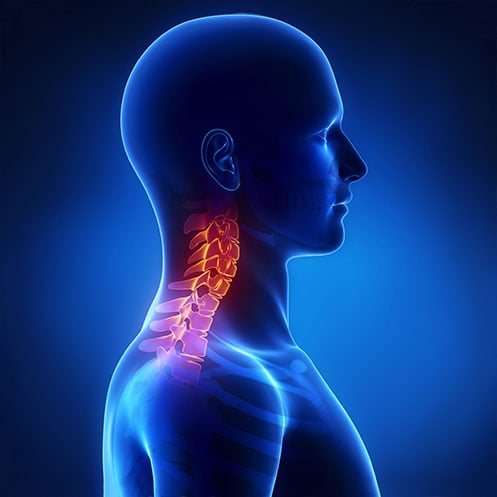Understanding Radial Tunnel Syndrome: Causes, Symptoms, and Treatments
Does typing cause you discomfort in your forearm or elbow? What about gripping objects or turning a doorknob? If this sounds familiar, there is a chance you may be dealing with radial tunnel syndrome (RTS).
“Many patients assume their pain is from overuse or general strain, but continuous discomfort in the forearm or elbow could point to an underlying nerve compression,” explains Dr. David Tsai, a double board-certified surgeon with The Center for Hand and Upper Extremity Surgery.
Fortunately, treatment is available, and the first step in regaining mobility and comfort is getting the correct diagnosis.
What Is Radial Tunnel Syndrome?
The radial nerve plays a large part in radial tunnel syndrome. Sometimes, this nerve in the upper arm and forearm gets pinched as it passes through the radial tunnel, a narrow space near the elbow. With this compression comes weakness, pain, and difficulty moving.
Radial Tunnel Syndrome vs. Carpal Tunnel Syndrome
Even though it is less common, radial tunnel syndrome is often mistaken for carpal tunnel syndrome (CTS) since both conditions involve nerve compression. However, there are some notable differences.
Carpal tunnel syndrome is caused by a pinched median nerve in the wrist. With carpal tunnel syndrome, you might feel numbness, tingling, and weakness in the fingers and hand, especially the thumb, index, middle, and ring fingers.
Radial tunnel syndrome pain, on the other hand, is located around the outer forearm and just below the elbow near the radial nerve. Instead of numbness or tingling, you may feel pain and weakness when extending the wrist or fingers.
|
Condition |
Pain Location |
Cause |
Key Symptom |
|
Radial Tunnel |
Outer forearm/elbow |
Nerve compression |
Pain, weakness |
|
Carpal Tunnel |
Wrist/fingers |
Median nerve compression |
Numbness, tingling |
|
Tennis Elbow |
Outer elbow |
Tendon inflammation |
Pain with movement |
Radial Tunnel Syndrome vs. Tennis Elbow
Because of their similar pain locations, radial tunnel syndrome can also be confused with tennis elbow. However, tennis elbow pain comes from inflammation of the tendons, or tendonitis. Unlike radial tunnel syndrome, tennis elbow pain is not caused by nerve compression
“Patients often come to me thinking they have tennis elbow when, in reality, they have radial tunnel syndrome. That is why getting the right diagnosis is critical for effective treatment,” advises Dr. Tsai. “Misdiagnosis can lead to ineffective treatments, which can delay recovery and prolong pain.”
Causes and Symptoms of Radial Tunnel Syndrome
Several factors can lead to radial tunnel syndrome. Most commonly, these include:
- Cysts or tumors in the arm
- Direct trauma or injury to the forearm or elbow
- Extended gripping or twisting motions (like using tools or playing racquet sports)
- Inflammation or swelling in the radial tunnel
- Repetitive arm and wrist movements, including push-and-pull activities (think typing, throwing a ball, or manual labor)
While being aware of the causes is important, so, too, is being able to recognize the early signs and symptoms. The signs of radial tunnel syndrome can vary in severity, but they often include:
- Aching, deep pain in the outer forearm or below the elbow
- Difficulty gripping objects
- Pain that worsens with movement, especially when lifting, pushing, or rotating the wrist
- Tenderness along the outer forearm
- Weakness when trying to straighten the wrist or fingers
If you notice any of these symptoms, it is important not to allow them to persist. If left untreated, radial tunnel syndrome can lead to reduced hand function and even nerve damage over time.
Effective Treatments for Radial Tunnel Syndrome
For many patients, radial tunnel syndrome treatment begins with non-invasive approaches.
These options typically include:
- Anti-inflammatory medications (NSAIDs)
- Bracing or splinting
- Physical or occupational therapy
- Rest from repetitive arm movements
- Steroid injections
When to Seek Radial Tunnel Syndrome Surgery
If non-surgical methods do not provide relief, you may need a radial tunnel syndrome surgery. During radial tunnel decompression surgery, tight fascial bands are released to alleviate pressure on the radial nerve and restore function. They will then release the tight tissues to promote blood flow and restore nerve function. Fortunately, most patients notice pain relief soon after surgery and regain full mobility with physical therapy.
“The goal of radial tunnel syndrome surgery is to alleviate pressure on the nerve while preserving strength and function,” says Dr. Tsai. “For patients who have been struggling with chronic pain, surgical intervention can be life-changing.”
Get Expert Care for Radial Tunnel Syndrome
No one should have to live with persistent pain. If you are dealing with forearm or elbow discomfort daily, it is time to get professional care before symptoms worsen,” encourages Dr. Tsai.
The Center for Hand and Upper Extremity Surgery specialists are here to help. Take the first step toward lasting relief by scheduling an appointment with Dr. Tsai today to discuss the best treatment options for your radial tunnel syndrome.
At The Center for Hand & Upper Extremity Surgery, we treat chronic pain in hands, hand, wrist, arm, and shoulder arthritis, nerve injuries, and other common causes of chronic hand pain.
If you are ready to explore surgical options for radial tunnel syndrome, contact Dr. Tsai and the care team at The Center for Hand & Upper Extremity Surgery, part of The Institute for Advanced Reconstruction, for a consultation today.









